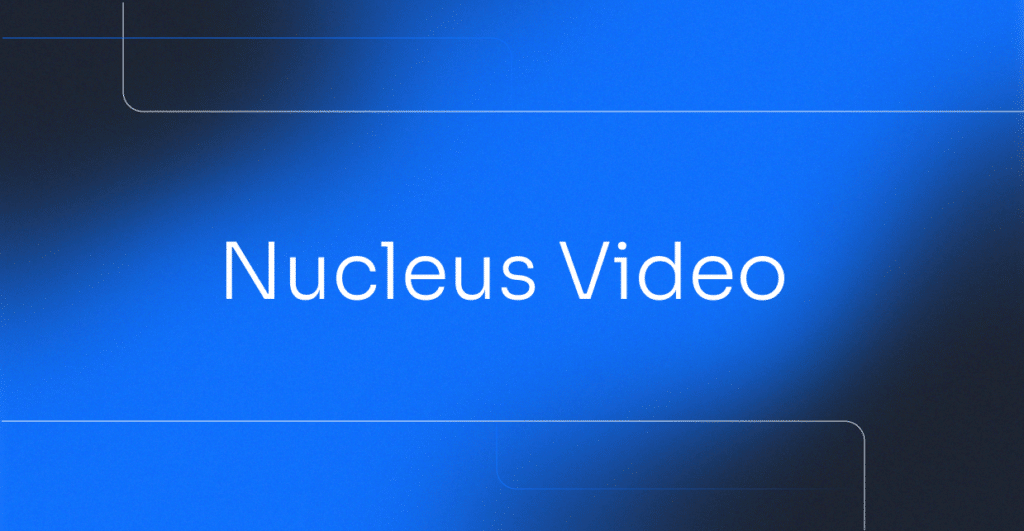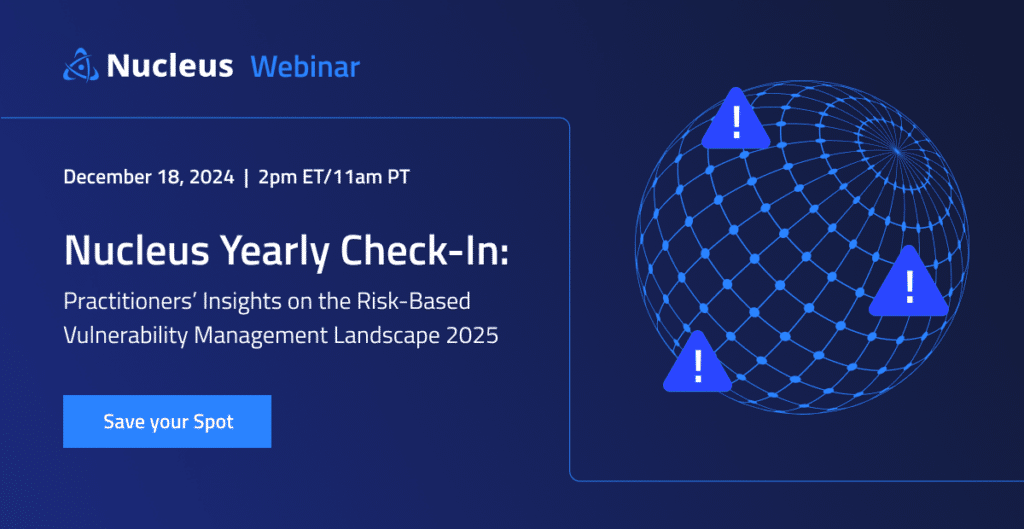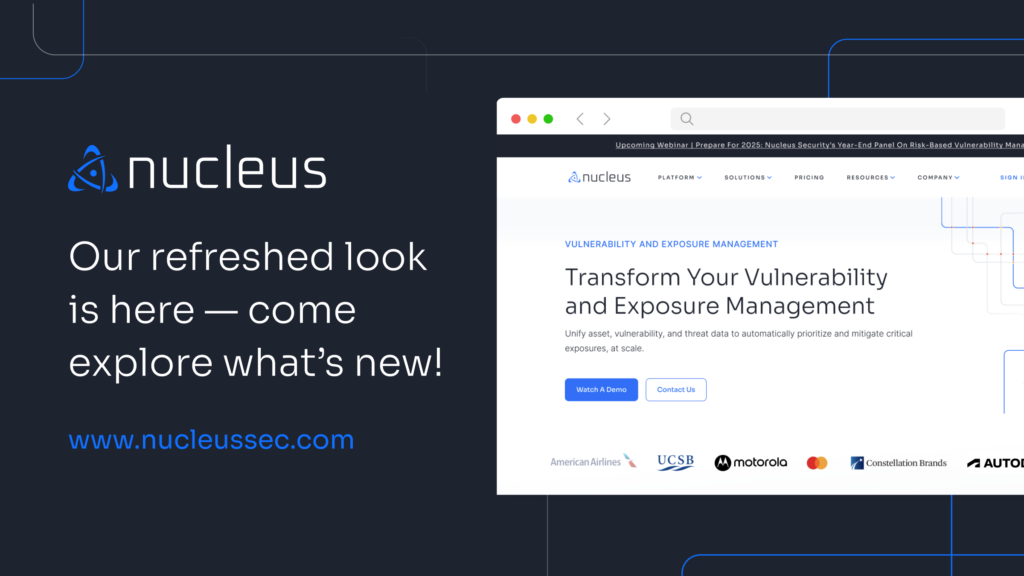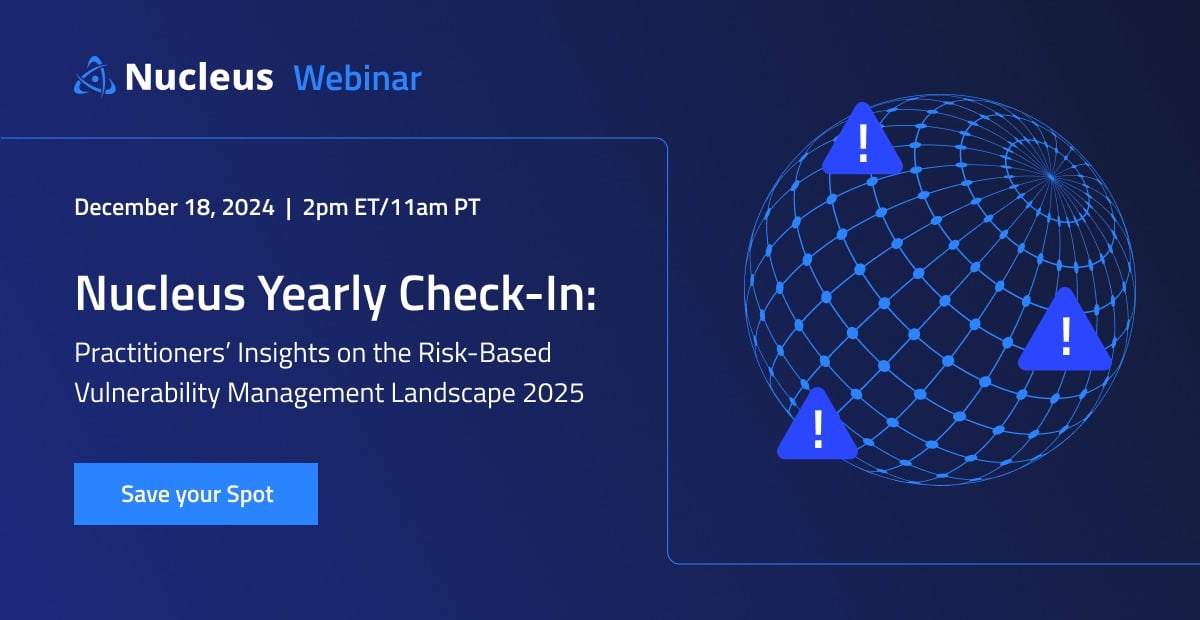FedRAMP Authorized and CDM Approved
Nucleus Unified Vulnerability Management is FedRAMP Moderate Authorized. The platform is approved for Continuous Diagnostics and Mitigation Program (CDM) under the General Services Administration (GSA).



VULNERABILITY AND EXPOSURE MANAGEMENT
Protect Your Critical Systems, at Scale
Manage exposures across your entire infrastructure with Nucleus, the only FedRAMP authorized risk-based vulnerability management (RBVM) platform that is purpose-built for the scale and complexity of Government agencies.

Accelerate Your Vulnerability Management Program
Unify Vulnerability Data
Centralize vulnerability data across complex, distributed systems to identify risks faster.
Prioritize Critical Risks
Prioritize high-impact vulnerabilities with risk-based insights and threat intelligence.
Automate Compliance
Operationalize workflows replacing time-consuming manual processes to effectively stay compliant.
COMPLIANCE FRAMEWORKS
Streamline Federal Compliance for NIST, CMMC, and FedRAMP Frameworks
Efficiently meet evolving compliance standards, NIST guidelines, FedRAMP certifications, and the Federal Information Security Modernization Act (FISMA).
With Nucleus, government organizations, cloud service providers (CSPs) and Defense industrial Base (DIB) contractors can fast-track Authorization to Operate (ATO) approvals, streamline vulnerability and exposure management, and automate process at scale to ensure continuous compliance.
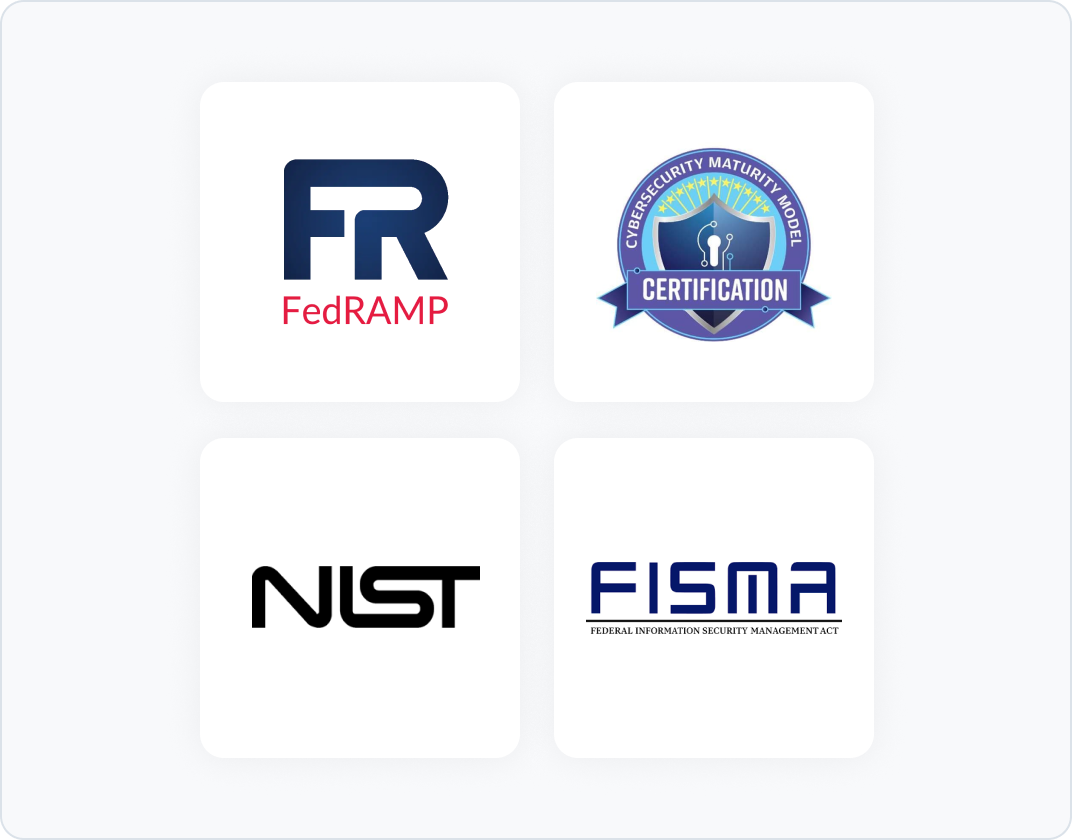
FEDERAL CYBERSECURITY REGULATIONS
Meet Executive Orders (EOs) and Binding Operational Directives (BODs) in One Platform
Unify visibility across your attack surfaces and automate processes to effectively meet federal mandates with the Nucleus Security Platform. Stay on top of Known Exploited Vulnerabilities (KEV), and track Internet exposed assets and your Software Bill of Materials (SBOM) aligning with BOD 19-01, BOD 22-01, BOD 23-01, and EO 14028.
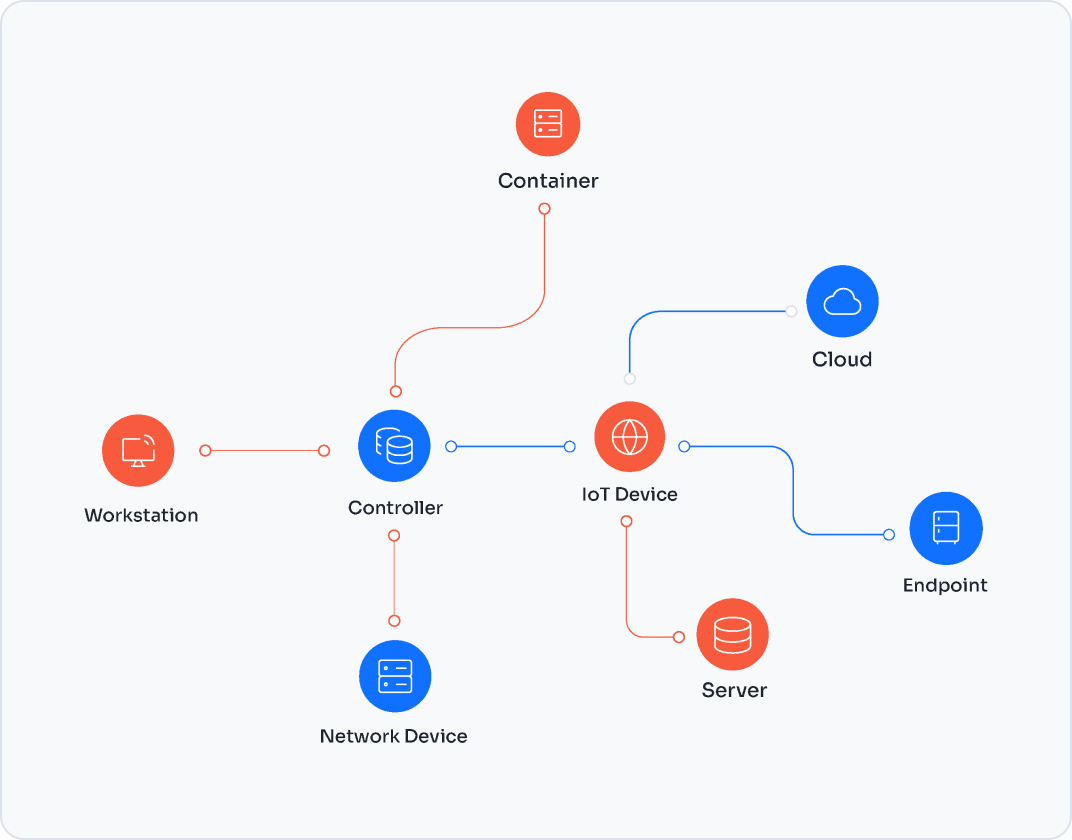
CONTINUOUS MONITORING
Continuously Monitor and Report Vulnerability Risk
Empower your team with Continuous Monitoring (ConMon) and CDM capabilities to meet federal mandates and maintain compliance. Nucleus combines asset context and threat intelligence to provide operational visibility, helping agencies surface and prioritize vulnerabilities that pose the most risk. By standardizing risk-based decision-making, Nucleus ensures critical vulnerabilities are mitigated, reducing exposure and enhancing your overall security posture.

NUCLEUS POA&M PROCESS AUTOMATION
Automate Your POA&M Processes
Streamline your POA&M management with Nucleus POA&M Process Automation. Our FedRAMP Moderate authorized platform automates tracking, reporting, and compliance — reducing manual effort and errors. Stay compliant with NIST, FedRAMP, and CISA requirements and focus on what matters most: securing your systems.

SECURE DEPLOYMENT
Flexible Deployment Options for Every Mission
Every federal agency operates with distinct mission requirements. Nucleus provides flexible deployment options, including self-hosted (on-premises) air-gapped environments for complete control and AWS GovCloud for secure, cloud-based configurations. Maintain data sovereignty by ensuring your data remains within national borders, aligning with regulatory frameworks.

VULNERABILITY THREAT INTELLIGENCE
Proactively Respond with Vulnerability Intelligence
Monitor the evolving threat landscape, identify risks, and respond proactively with the Nucleus Vulnerability Intelligence Platform (VIP). Combine custom feeds from your cyber operations with commercial, open-source threat intelligence to unify mission critical visibility to detect risks, analyze impact, and take action quickly.

Watch a Demo Today
Learn more about the Nucleus Unified Vulnerability Management platform right away.
Watch our in-depth, on-demand demo to see us in action.

